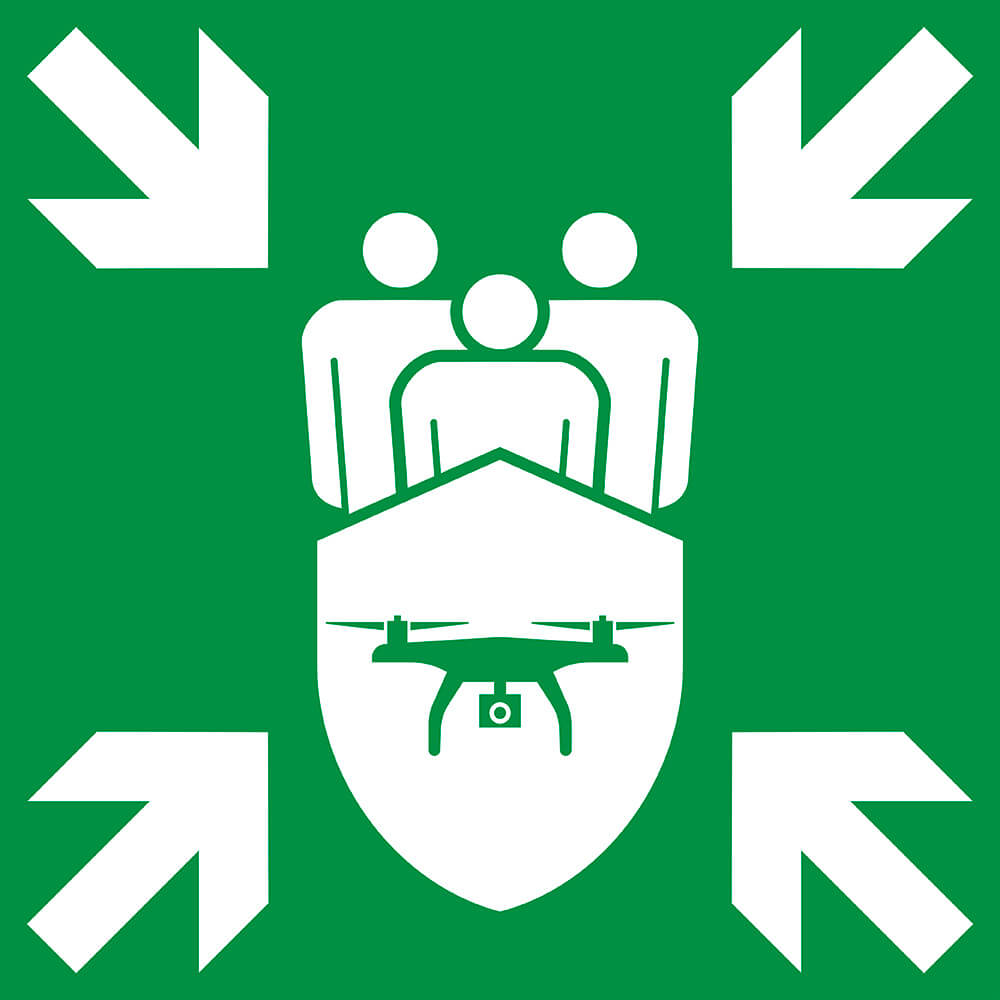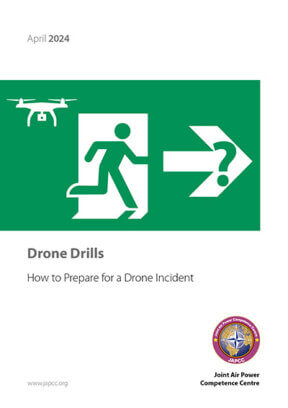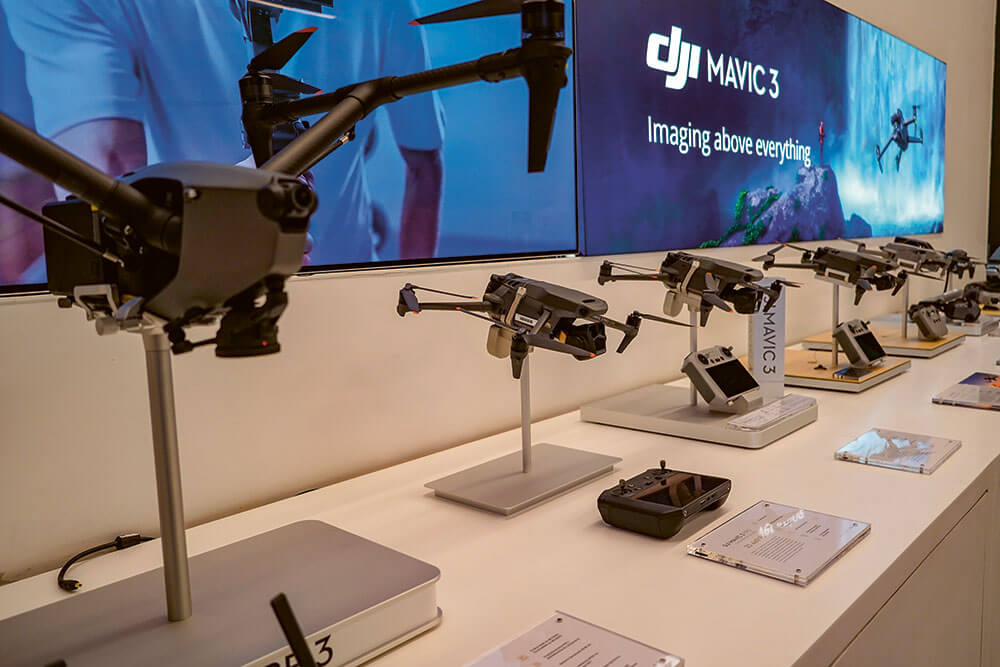Executive Summary
Well-established emergency procedures are vital for swift and efficient crisis management across military, civil, and public sectors. These protocols encompass first aid, fire, and bomb threat calls, aiming to save lives, prevent harm, and minimize destruction. Regular drills ensure that all stakeholders are well-versed in these procedures, contributing to effective crisis handling and safety.
While established protocols exist for common emergencies, organizations often lack specific plans for drone incidents, which are becoming more prevalent due to increased drone usage. Responses to drone incidents require tailored plans covering threat assessment, protection measures, and implementation of immediate procedures. Regular drills are essential to ensure readiness and proficiency.
Effective response to drone incidents might be delayed as Counter-Unmanned Aircraft System (C-UAS) technology is not yet widely available. Therefore, immediate actions upon detection are crucial to minimizing harm, damage, and potential casualties.
Threats Originating from Drones
The proliferation of drones and Unmanned Aircraft Systems (UAS) has brought opportunities and potential threats to various sectors. Drones with cameras raise concerns about privacy violations and breaching security as well as illegal monitoring of restricted areas and government facilities. Additionally, drone collisions and malfunctions pose physical hazards. The weaponization of drones and their potential for cyber-attacks add further dimensions to these concerns.
The accessibility of drones and their user-friendly controls make potential abuses feasible even without advanced expertise. The second chapter highlights recent incidents and the pressing need to address drone-related threats comprehensively, with tailored response plans, education, and countermeasures to ensure the health and safety of personnel.
Figure 1: DJI Showroom in Katowice, Poland. © EricBery/Shutterstock.com
Drone Capabilities
Even in their most affordable variants, drones can capture high-definition images and identify objects and individuals from substantial distances. The level of detail varies, but a general guideline is that larger drones offer better imaging capabilities. Larger drones positioned a few metres away from a window can capture enough detail to read documents and computer screens inside a room. Moreover, larger fonts used in presentations, diagrams, headlines, and whiteboard notes are even more susceptible to drone capture.
The potential dangers posed by drones are magnified when considering their possible use as delivery systems for explosives. Small amounts of explosives can cause significant harm to the human body and easily break glass surfaces and windows. Common public and office buildings are often not designed to withstand explosions, focusing more on protection against burglary and intrusion. Detecting explosives within drones, especially when concealed, is exceptionally challenging for an untrained eye. Therefore, encountering an unauthorized drone requires extreme caution, treating the drone as a possible Improvised Explosive Device (IED) until professionals can assess the situation and provide clearance.
Chemical, biological, radiological, and nuclear substances have varying effects, with even minor quantities and brief contact times posing severe health risks. Dedicated equipment, such as liquid tanks with spray nozzles or specialized containers, is needed to apply these substances. Caution is essential, especially if attached tanks or containers are visible. Professionals should always be consulted to respond in such situations, and individuals should refrain from employing their own measures to prevent being contaminated.
The evolution of cyberattacks has introduced new challenges. Previously, attackers had to approach target networks physically, risking detection and arrest. However, contemporary methods enable attackers to employ drones to breach physical security boundaries. Equipped with tools like the ‘WiFi Pineapple’1, an altered version of the Raspberry Pi2, drones can infiltrate protected areas without the attacker’s physical presence. Paired with local cellular connectivity, drones can launch substantial attacks against wireless networks, which can pose a significant threat, from compromising intellectual property and exploiting system vulnerabilities to breaching personal data. The potential for sabotage, including data deletion and destruction of computer-controlled equipment, is a reality. This merging of technology and tactics emphasizes the urgency of implementing comprehensive security measures in the rapidly evolving digital landscape.
Immediate Response Options
Any initial action should eliminate the drone’s ability to cause harm or capture footage and images. Stand-off and staying clear of a drone are the best protection until trained professionals can take countermeasures. Recommended measures that can be handled easily and swiftly are locking the computer screen and leaving the room. Depending on the situation and available time, curtains and shutters can be closed, and sensitive documents can be covered or stored away. Doors should be closed, and staff should stay clear of glass surfaces and windows. Wireless connections should be turned off or at least checked if they are still connected to the network they are supposed to be on.
Preparatory Mitigation Options
Preventive safety measures can significantly minimize the required time or even eliminate the need for the immediate actions described above, thus saving critical time for a rapid evacuation. Recommended options include arranging workspaces not to be observed from the outside, installing window shutters, placing desks at a distance from windows, and establishing designated evacuation points for drone incidents. Educating staff on cyber security, providing best practices for handling mobile devices, and investing in enterprise-level wireless network security mitigates drone-delivered cyber threats.

Post Incident Measures
After a drone incident, the threat may not be over. Drones may have landed, left something behind, or even crashed. Until first responders arrive, personnel must keep clear of a landed or crashed drone and any unexpected objects found after a drone sighting, as it may carry explosives or other hazardous materials.
Conclusion
The widespread availability of drones has introduced a spectrum of security challenges. Drones can capture high-resolution images, detect objects, and even transport explosives. Privacy concerns arise as advanced drones can decode documents and screens, potentially exposing sensitive information. Safety risks are heightened when explosives are involved, as small amounts can cause significant damage and injuries due to the lack of blast-resistant structures and difficulties in detecting hidden charges. Additionally, even minimal quantities of hazardous materials carried by drones can cause severe health effects. The evolving landscape of cyberattacks adds another layer of complexity, with drones equipped with tools like the Raspberry Pi bypassing physical security to compromise networks and sensitive data. Education and training are vital to address these issues, enabling personnel to recognize threats, understand drone risks, and implement appropriate protocols.
Hak5 LLC, ‘WiFi Pineapple’, [online store], https://shop.hak5.org/products/wifi-pineapple, (accessed 7 November 2023).
Raspberry Pi is a series of small single-board computers originally leaned toward the promotion of teaching basic computer science in schools but can be easily turned into serious Wi-Fi hacking tools. Technical specifications and purchase options for the most recent model can be found at the Raspberry Pi Foundation’s homepage at https://www.raspberrypi.com/products.













